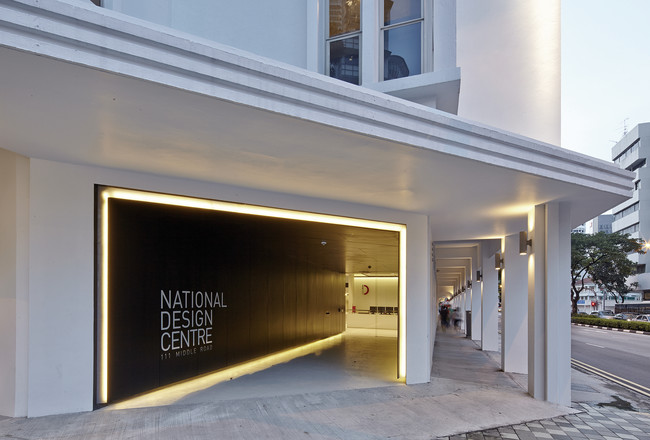
Design got personal at an event organized by Asia Design Forum (ADF) at Singapore’s National Design Centre in November. A diverse group of speakers looked at how architecture and design can affect people—changing the way residents engage with their environment or altering the emotional condition of the designer herself. Participants, who ranged from a former government official to an art gallery owner, focused on different scales, looking at that of the community or a single brick. But all of them talked about strengthening people’s connections to place.
 |
| Photo © Architectural Record Will Bruder and Chan Heng Chee |
Part of ADF’s series of “Design Roulettes,” which has traveled to cities around the region, the event brought together participants from Singapore, Malaysia, Indonesia, and the United States, who made short presentations and interviewed each other. Each person looked at how design can save a different notion, value, or condition.
Chan Heng Chee, who teaches at the Lee Kuan Yew Centre for Innovative Cities and had served as Singapore’s ambassador to the United States and to the United Nations, addressed “designing to save social capital.” She defined social capital as a community’s attachment to place and its sense of belonging. “Can you design for attachment?” she asked. One way to do that, Chan suggested, is to create an incomplete design and let residents or users finish it—perhaps adding a garden or turning an open space into a gathering place. “Forcing people to overcome small inconveniences and interact with their environment can help them create social capital,” she asserted.
“Architecture is about listening,” said Phoenix-based architect Will Bruder. “I’m interested in creating a conversation with my clients.” By doing this, he tries to make each project different and personal. And by responding to the particulars of where he builds—whether it’s a snow-covered haystack in Wyoming or a mesa in Nevada—he connects his work to a specific place and time.
Architect Cheong Yew Kuan, whose firm AreaDesign has offices in Bali and Singapore, looked at four of his houses through the lens of saving a particular craft: brickwork. Each project used brick in a different way, one responding to the clients’ collection of Asian textiles, for example, and another contrasting small bricks with poured concrete. “Craft is so more than an individual proficiency or skill,” stated Cheong. “It incorporates the cultural, social, economic, even the political.”
The interplay between the societal and the personal was an underlying theme of Shalini Ganendra’s talk. Ganendra, who owns and operates a gallery and artist residence in Kuala Lumpur, talked about the shift from large, public museums to private galleries and how she has established a place where artists can both create their work and display it. Living with art, she said, is a way of saving the art experience.
Saving overlooked spaces was the focus of a joint presentation by artist Tang Ling-Nah and architectural designers Wu Huei Siang and Quek Li-En, the two partners of atelier | small. The three of them worked together on an installation that transformed a pedestrian tunnel in Singapore into an attractive place where people could linger and discover drawings by Tang.
Calling herself “restless” and having “an unquiet mind,” designer and editor Kelley Cheng, said she uses design to save her sanity. The discipline and rigor that her work requires provides an emotional framework on which she can depend. “If art is about life, design is about the logic of life,” she asserted.
The event included a short debate among the speakers on the topic: Can designers save the world or must they save their profession first? Several presenters argued for accepting the challenge of making the world a better place. Chan Heng Chee, though, said, “It has been my experience that whenever people try to save the world, they end up making a mess of it.” Instead she urged designers to address the particular problems of wherever they are and that together these efforts will make a difference.


Post a comment to this article
Report Abusive Comment